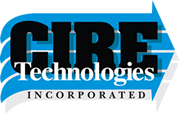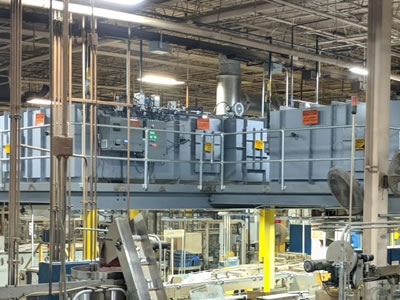Ancillary Equipment
Replacement Heat Exchangers
Cire Technologies designs, fabricates and installs replacement heat exchangers for thermal oxidizers and catalytic oxidizers. Special construction for high temperature applications using Type 310 stainless steel is available. We also supply self-cleaning heat exchangers for silica dioxide dust applications.
For regenerative thermal oxidizers we specialize in replacing high pressure drop, high maintenance, saddle media with structured media designed to decrease your pressure drop, increase your flow and reduce your operating costs.
Burner Systems
Cire Technologies provides new and replacement burner systems for dryer, oxidizer and heating equipment applications. The burner systems are FM, IRI and NFPA compliant. Packaged burner systems complete with gas trains and controls are available.
Gas Fired Indirect Heaters
Cire Technologies designs and fabricates complete gas fired, indirect heaters for heated process air. These heaters are used to marry the low cost of heating with natural gas with the requirements of the process to avoid process air contact with a burner. Typical applications include silicone coating dryers and clean room processes.
Our indirect heaters utilize natural gas fired nozzle burners, stainless steel plate type heat exchangers and both recirculating and exhaust fans. High efficiencies are ensured by a high percentage of recirculation and an exhaust fan sized to match the combustion air added to the system air by the burner combustion air fan.
The heaters are completely assembled package units with piped and wired gas trains and control systems. Custom sizes and output temperature ratings are available to meet your process requirements.
Gas Trains and Control Systems
We can supply new or replacement gas train components or complete assemblies. Control panels for dryer and oxidizer equipment are also available. Our gas trains use Honeywell components. Flame safeguard systems are also Honeywell. Our control panels use either Schneider (Sq D) or Allen Bradley components as specified by the customer. HMI touchscreen interfaces, PLC based control and communications with customer DCS are available options with our control panel designs.
Waste Heat Recovery
Cire Technologies has an extensive history of utilizing the waste heat from process ovens and dryers or oxidizers to supply some or all of the heat energy required for new or retrofitted ovens and dryers. Our understanding of both process and oxidizer systems provides us with a unique tool kit for designing and supply systems that are balanced and provide a high rate of return to our customers.
We have used both direct and indirect feedback systems successfully for our customers.
Direct feedback takes the exhaust from an oxidizer and feeds it back to the process oven or dryer to be mixed with ambient air and provide a given desired temperature for the supply air to the equipment. Indirect uses a heat exchanger to transfer the waste heat from either an oxidizer or an oven/dryer to heat make-up air supplied to the process equipment. When taken from the oven or dryer the make-up air though heated will need supplemental heat to reach its desired operating temperature, though the savings in high temperature applications can be substantial. If we have waste heat available from an oxidizer it can often supply most or all of the heat required back in the process.
Complete systems from design to installation are available.
Humidification Systems
Cire Technologies provides complete, automated humidification systems for coating line enclosures. These systems typically control the make-up air flow rate to the enclosure to meet regulation mandated fugitive emission capture rates. For seasonal low humidity levels, our systems add humidification to the make-up air at a rate to provide a uniform humidity enviroment in the enclosure. This results in improvements to the coating enviromemnt, improving coating consistency and importantly it also helps eliminate the potential static charges that cause fires in solvent-based coating lines.



